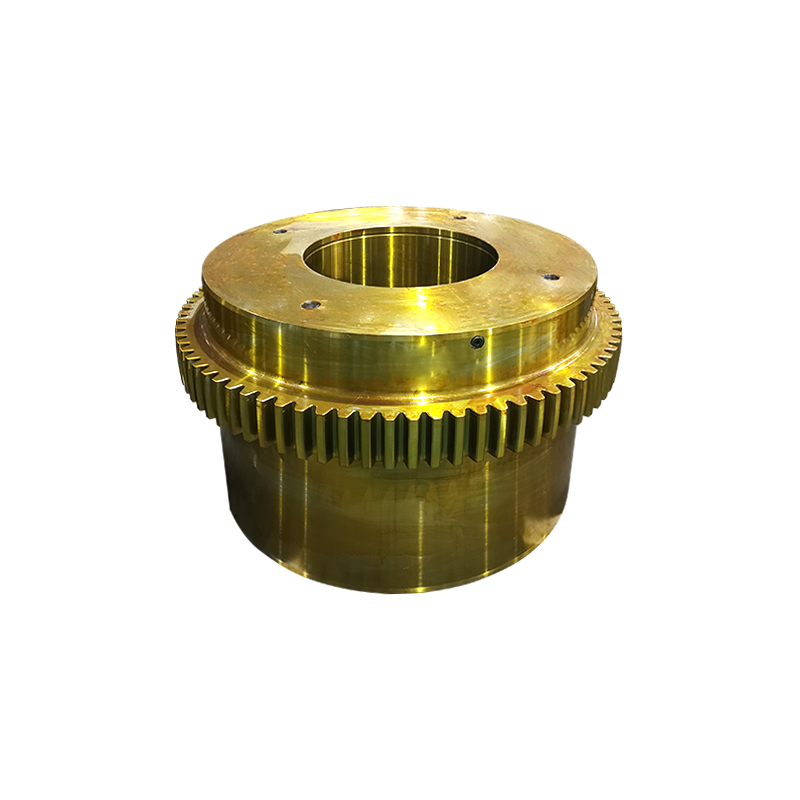When it comes to high-speed applications, the need for reliable, efficient, and durable power transmission components becomes paramount. Gear coupling, often hailed for their robust design and versatile performance, raise an important question: Can they be used effectively in high-speed environments? The answer is not only affirmative but also underscores the inherent strengths of gear couplings in such demanding settings. However, the key lies in understanding the technical parameters, material specifications, and design considerations that govern their operation in high-speed conditions.
Understanding Gear Couplings
Gear couplings are mechanical components designed to connect shafts, transmitting torque and rotational motion between them. Constructed with precision-cut teeth that mesh together, these couplings allow for smooth and efficient power transfer. Their primary advantages—high torque capacity, minimal backlash, and the ability to compensate for misalignments—make them a popular choice in industries ranging from automotive and aerospace to industrial machinery.
The primary concern when utilizing gear couplings in high-speed applications is their ability to withstand the forces generated by rapid rotational speeds. The coupling must operate with minimal heat generation, reduced wear, and no compromise in performance under high-frequency cycles.
Factors Affecting High-Speed Performance
Several factors influence the efficacy of gear couplings in high-speed environments, including:
Material Selection: Gear couplings designed for high-speed applications must be constructed from materials that can withstand significant centrifugal forces, reduce friction, and dissipate heat efficiently. High-quality alloys, such as carbon steel or stainless steel, are often used due to their durability and resistance to wear. In some cases, specialized coatings or surface treatments may be applied to further enhance their performance under high-speed conditions.
Tooth Design and Precision: The precision of the teeth is crucial for minimizing backlash and ensuring smooth engagement and disengagement during operation. In high-speed scenarios, even minute misalignments or irregularities in tooth geometry can lead to significant wear or even failure. High-quality, precision-cut gears are vital to ensure a seamless, reliable connection between shafts.
Lubrication and Heat Dissipation: The higher the speed, the greater the friction and heat generated. Effective lubrication is essential to reduce wear and maintain operational efficiency. In high-speed applications, the choice of lubricant becomes more critical, as it must be able to maintain its viscosity under extreme conditions. Additionally, the design of the coupling should allow for efficient heat dissipation to prevent overheating, which can degrade performance or lead to component failure.
Dynamic Balancing: Gear couplings operating at high speeds must be carefully balanced to avoid vibrations that could lead to premature wear or failure. Imbalance can cause increased loads on certain components, leading to excessive friction and heat buildup. In some cases, dynamic balancing is required to ensure smooth and stable operation at high speeds.

Advantages of Gear Couplings in High-Speed Applications
Despite these challenges, gear couplings offer several advantages in high-speed environments:
Torque Transmission Efficiency: Gear couplings are highly efficient in transmitting torque, making them an ideal choice for high-speed applications where power transfer needs to be both precise and reliable. Their ability to handle substantial torque loads without significant backlash or slippage ensures consistent performance, even under demanding conditions.
Misalignment Compensation: Gear couplings are inherently capable of compensating for angular, parallel, and axial misalignments, which are common in high-speed systems due to the dynamic nature of rotating machinery. This flexibility reduces the risk of premature wear and ensures long-term reliability.
Compact Design: High-speed systems often require compact, lightweight components that can handle large forces in confined spaces. Gear couplings offer a space-efficient solution without compromising on performance, making them ideal for use in high-speed machinery with stringent design constraints.
Limitations and Considerations
While gear couplings can be used in high-speed applications, certain considerations must be addressed:
Speed Limits: Every gear coupling has an optimal speed range. Operating outside this range can result in increased vibration, heat buildup, and wear. It’s essential to carefully select gear couplings that are rated for the required speeds to ensure reliable performance.
Maintenance Requirements: High-speed applications tend to accelerate wear on mechanical components, including gear couplings. Regular inspection and maintenance are necessary to ensure that gear teeth remain sharp and free from defects, lubrication systems are functioning effectively, and any signs of excessive wear are addressed before they lead to failure.
Cost vs. Performance: While gear couplings are generally more expensive than other types of couplings, their durability and efficiency in high-speed settings can make them a cost-effective choice in the long run. The key is selecting the right coupling for the application, balancing upfront costs with long-term operational benefits.
In high-speed applications, gear couplings offer a robust solution for power transmission, providing high torque capacity, misalignment compensation, and reliable performance when properly designed and maintained. By selecting appropriate materials, ensuring precise tooth geometry, and implementing effective lubrication and heat dissipation strategies, gear couplings can excel in demanding high-speed environments. However, careful attention to the coupling’s specifications and maintenance is crucial to ensuring optimal performance and longevity.
Gear couplings, when properly engineered for high-speed conditions, provide an exceptional combination of strength, efficiency, and reliability—making them a viable and valuable choice for a range of high-speed applications.
We have a strong R&D team, and we can develop and produce products according to the drawings or...
We have two of our own casting foundries and one CNC machining factory. So we can offer the best price...
We have our own testing lab and the advanced and complete inspection equipment, which can...